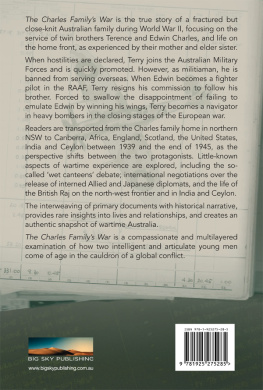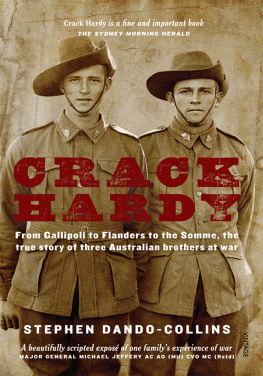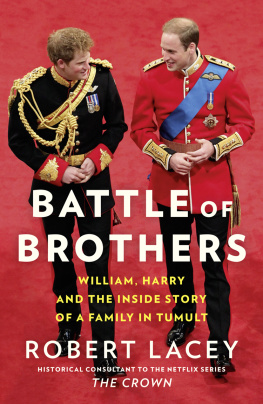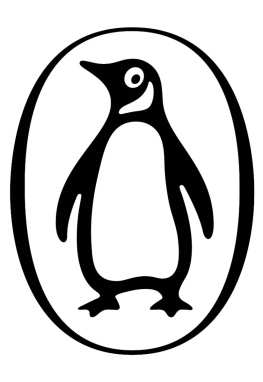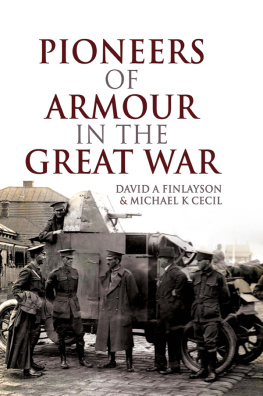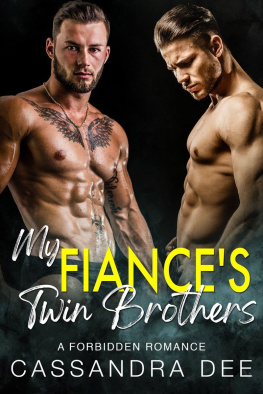THE CHARLES FAMILYS
WAR
A gripping story of twin brothers during World War II
THE CHARLES FAMILYS
WAR
A gripping story of twin brothers during World War II
Alan Fewster

Copyright Alan Fewster
All imagery within this book is provided by and copyright of Alan Fewster.
First published 2015
Copyright remains the property of the authors and apart from any fair dealing for the purposes of private study, research, criticism or review, as permitted under the Copyright Act, no part may be reproduced by any process without written permission.
All inquiries should be made to the publishers.
Big Sky Publishing Pty Ltd
PO Box 303, Newport, NSW 2106, Australia
Phone: | 1300 364 611 |
Fax: | (61 2) 9918 2396 |
Email: |
Web: | www.bigskypublishing.com.au |
Cover design and typesetting: Think Productions
National Library of Australia Cataloguing-in-Publication entry (pbk.)
Author: | Fewster, Alan, 1956-, author. |
Title: | The Charles familys war: a gripping story of twin brothers during World War II / Alan Fewster. |
ISBN: | 9781925275285 (paperback) |
Subjects: | Charles, Edwin Llewellyn, 1919 |
Charles, Terence John, 1919 |
Australia. Royal Australian Air ForceHistoryWorld War, 1939-1945. |
Bomber pilotsAustraliaAnecdotes. |
TwinsAustraliaAnecdotes. |
Aeronautics, MilitaryAustraliaHistory. |
World War, 1939-1945Participation, Australian. |
Civilians in warAustralia. |
AustraliaHistory, Military1939-1945. |
AustraliaHistory1939-1945. |
Australia-Social life and customs1939-1945. |
Dewey Number: 940.548394
For Leanne
CONTENTS
This book was a long time coming. In 1987, following the death of my uncle, Edwin (Ted) Charles, I was poking around a cupboard in his house and came across a cardboard box containing the letters that form the basis of this story. There were hundreds of them. I sat down and started to readand I didnt get up for two days. The letters were from Edwin and his twin brother, Terence (Terry), to their mother, Beryl, and sister, Rosalie Charles. In some cases, there were two letters per envelope; for much of the war both of Beryls two sons were away from home. She wrote her own covering letter, forwarding one absent sons letter to the other. As well as the letters, there was a small leather suitcase, crammed full of family photographs, mainly taken in the 1930s and 40s. Most were inscribed with identifying information and a date. My first debt of gratitude is, then, to my late grandmother, Beryl Charles, for instilling in her children the notion of the importance of documenting ones family history.
I should like to thank the Commonwealth Department of Veterans Affairs, for a grant made under its Their ServiceOur Heritage commemorative program, which contributed towards the cost of having the letters transcribeda massive job, which I could never have done myself. My old teacher, Ian Hancock, read all of the transcripts and confirmed my own firm belief that they had a story to tell, as did the late Hank Nelson who drew on some of them in his excellent book Chased by the Sun, about the Australians in Britains RAF Bomber Command. I am grateful to Jack Hatfield, who shared his wartime reminiscences with me. Greg Tanner supplied some of the information about the Hatfields of Angledool. I thank the Burroughs family of Canberra for copies of letters received from Phil Burroughs, and other material relating to his death.
The research staff at the Australian War Memorial and the National Archives of Australia were, as ever, of great assistance. I should like to acknowledge the support of Bryony Cosgrove, whose advice in the early stages of this project was invaluable. My greatest asset, however, in writing this book was the prodigious memory of my mother, Rosalie. Time after time she was able to recall with vivid clarity details of people, names, placeseven meals!dating back more than 70 years. I should also like thank my editor, Jenny Scepanovic, whose touch was light, and Denny Neave, at Big Sky Publishing, without whose enthusiasm this book would never have seen the light of day.
Finally, I acknowledge the love and support of Lea. Without you, I am nothing.
Edwin Llewellyn Charles was a slim, handsome youth, but Terence John, his brother, was beautiful and he knew it. Technically, the boys were twins, but their personalities could not have been more different. Terry, older by 30 minutes, engaged with the world at full tilt; by contrast, Edwin was unsure of his place in it. Commercial photographers would, as a matter of course, capture this dichotomy. Their images show a relaxed and confident Terry looking straight into the camera or striding purposefully, arms swinging. Edwin, diffident in mien, is often half a step behind, with eyes downcast and arms akimbo; his face is avertedboth from the lens and from his brothers golden aura.
Terry and Edwin and their elder sister, Rosalie Elaine, were bonded to each other and to their mother, Beryl, by a single dominating misfortune. It was this: for reasons he vouchsafed to no-one, their father had estranged himself from his family.
Beryl and her three children had family links back to the earliest days of white settlement. The twins great-great-great grandfather, John Bray, was a red coat on the Second Fleeta bay in the Parramatta River bears his surname. Their grandfather, Edwin Johnson, trained as a surveyor in Goulburn and the Lands Department sent him to the North Coast of NSW where in 1884, he married a local girl, Nina Bray.
In 1888, Johnson surveyed a line of road running beside the North Arm of the Tweed River, from the Bean Tree Crossing to the Kynnumboon Bridge. Johnsons map shows the Tweed debouching onto its floodplain where, dead straight and a chain wide, the road cuts across a series of 320-acre blocks, all of which were owned by the family into which Surveyor Johnson (as he was known) had married. A mile from the roads terminus still stands the modest wooden house that gave the bridge its name. It was here 30 years earlier that Johnsons future father-in-law, Joshua Bray, the red coats grandson, had built a home for his bride. Josh called the place Kynnumboon and opened a post office. Around it grew the town of Murwillumbah.
Rosalie Charles turned two in 1918, the year in which Josh died, aged 80, having held most of the districts public offices. Bray had been the man the old hands liked to talk ofathletic, venturesome, shrewd, far sightedthe true type of pioneer the local newspaper said, praising his public spirit. His obituarist might well have added the adjective humble. Brays lineage and his wealth would have qualified him for bunyip aristocracy, but as they gathered at his grave, his mourners would have noted that even unto death, their friend eschewed ostentation: a lorry had conveyed his casket to the cemetery.
Two years earlier, in 1916, after barely a year of marriage, Beryls husband, Clarence Painter Charles, the Sorbonne-educated scion of a Sydney retailing family, abandoned his wife and infant daughter on a dairy farm he had bought at Bilambil, in the hinterland of the north coast of New South Wales. Clarence returned only once, following which visit Beryl was delivered of Edwin and Terence, on 6 June 1919.
Next page
